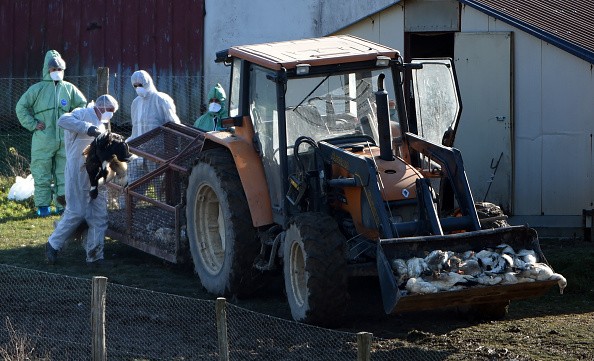
Another commercial poultry flock in southern Indiana has tested positive for avian influenza, according to state officials.
Bird Flu Outbreak in Indiana Turkey Farm
A laboratory test for the virus was carried out on a fourth commercial turkey flock in Dubois County, Indiana and the result came back positive.
According to Phys.org, the samples were tested at the National Veterinary Services Laboratory of the United States Department of Agriculture in Iowa.
Dubois County had three cases, and Greene County had two. A zoo and a backyard flock have also been found to have been infected. Preliminary tests are expected to reveal whether or not this strain of the virus is particularly pathogenic.
More than 16,000 birds have been slaughtered in an effort to stop the spread of the virus to other farms.
Does Avian Influenza Viruses Infect Human?
According to the report, workers from the Animal Health Board went out to known backyard poultry owners in the area to arrange for bird testing to take place there.
Currently, no human instances of avian influenza viruses have been found in the United States, according to the CDC. The U.S. Department of Agriculture has confirmed the first case of highly pathogenic bird flu in commercial poultry in the United States since 2020.
The Animal Health Board reported that more than 400,000 birds died as a result of a bird flu outbreak in Dubois County in January 2016. In terms of turkey production, Indiana ranks third in the United States.
Classification of Avian Influenza A Viruses
On the basis of their molecular properties and their potential to cause disease and death in chickens in a laboratory setting, Avian Influenza A viruses has two categories - low pathogenic avian influenza (LPAI) and highly pathogenic avian influenza (HPAI).
In low pathogenic avian influenza (LPAI), chickens/poultry may show no symptoms or a moderate illness (like ruffled feathers and a drop in egg production).
Infected wild birds with low pathogenic avian influenza A viruses show no or few symptoms of illness. Some LPAI A viruses can mutate into highly pathogenic avian influenza A viruses in poultry infected with them.
The highly pathogenic avian influenza (HPAI) can cause severe sickness and substantial mortality in poultry infected with the virus. Chickens can die from HPAI A virus infections within 48 hours, with mortality rates of up to 90% and 100%, depending on the severity of the sickness.
Some ducks, however, may be affected even if they show no symptoms of sickness. HPAI A viral infection in poultry can potentially transmit to wild birds, allowing the virus to spread even further.
Some HPAI A virus subtypes can infect some wild bird species without causing any symptoms, while other HPAI A virus subtypes can cause severe sickness and death in some wild birds and livestock.
Related Article: US Farms Placed on Quarantine Due to Increased Cases of Bird Flu
For more news, updates about bird flu and similar topics don't forget to follow Nature World News!
© 2025 NatureWorldNews.com All rights reserved. Do not reproduce without permission.





